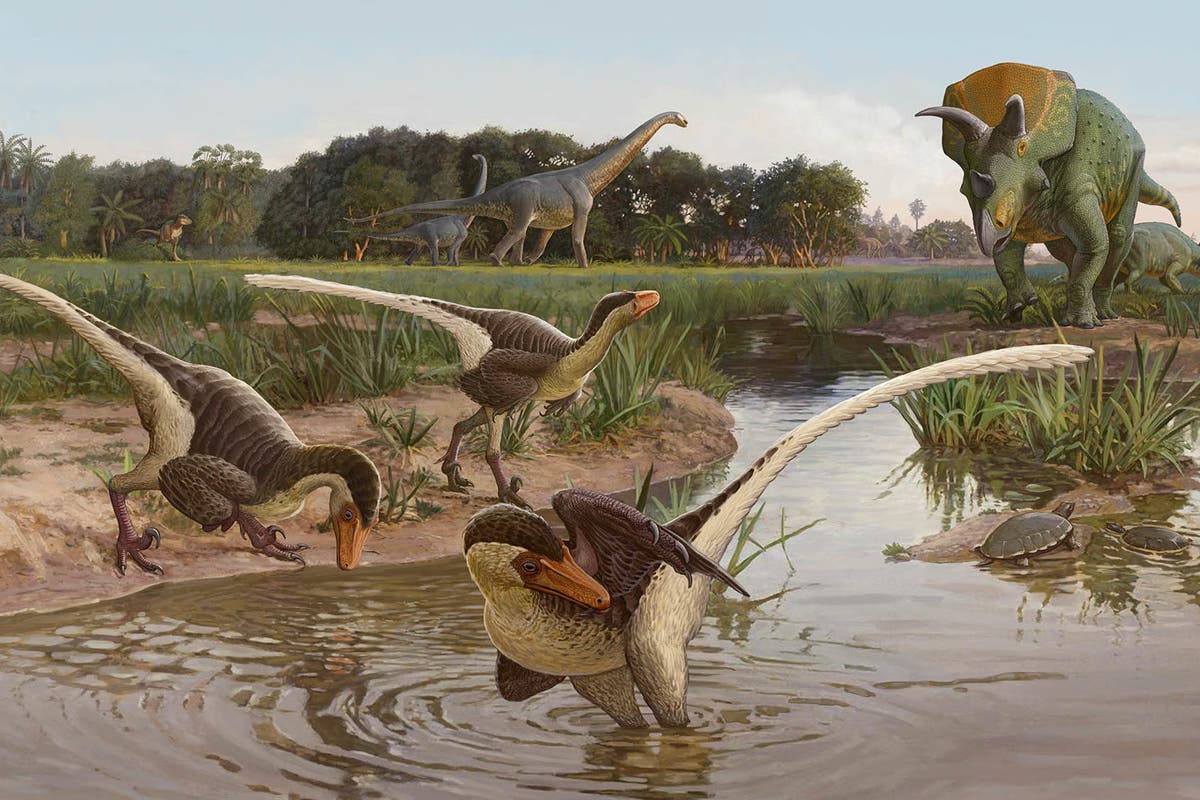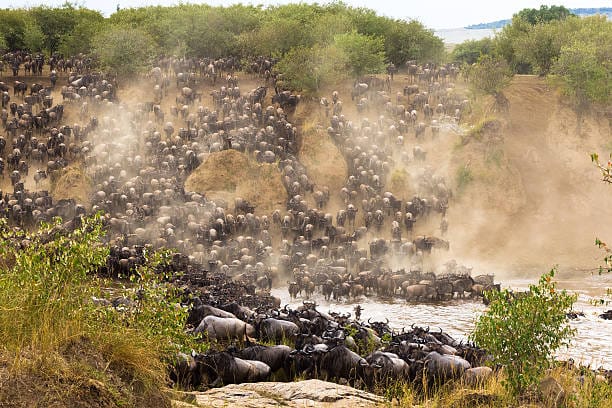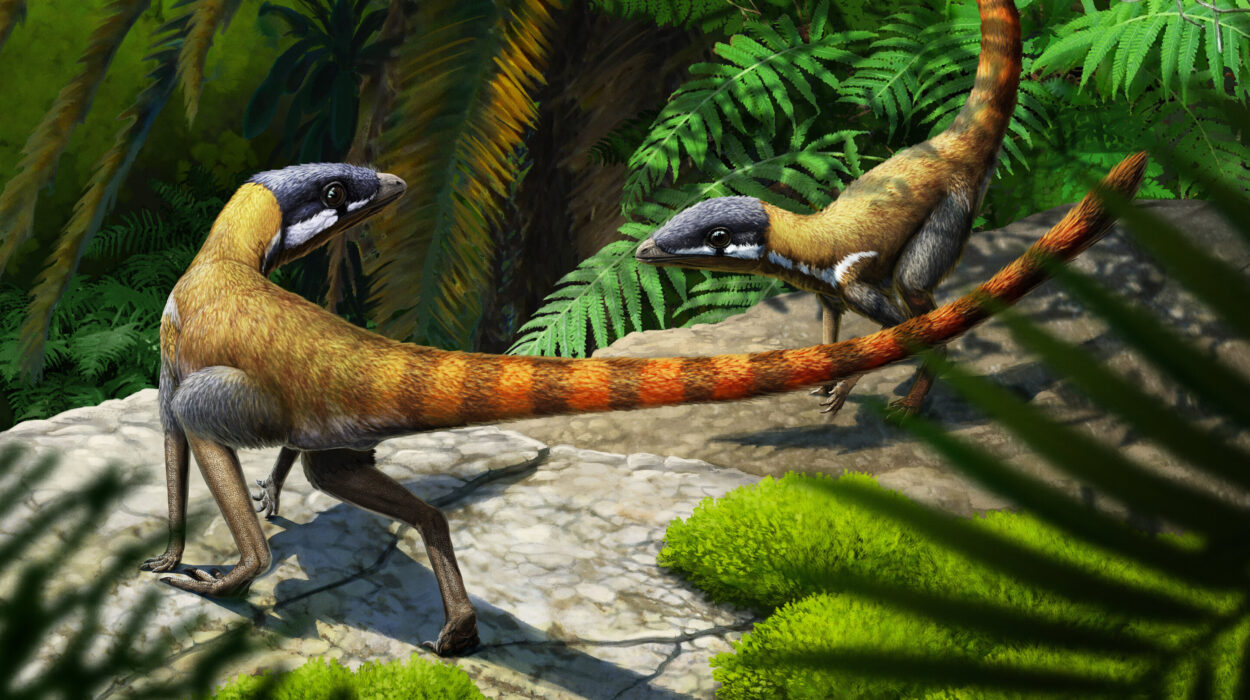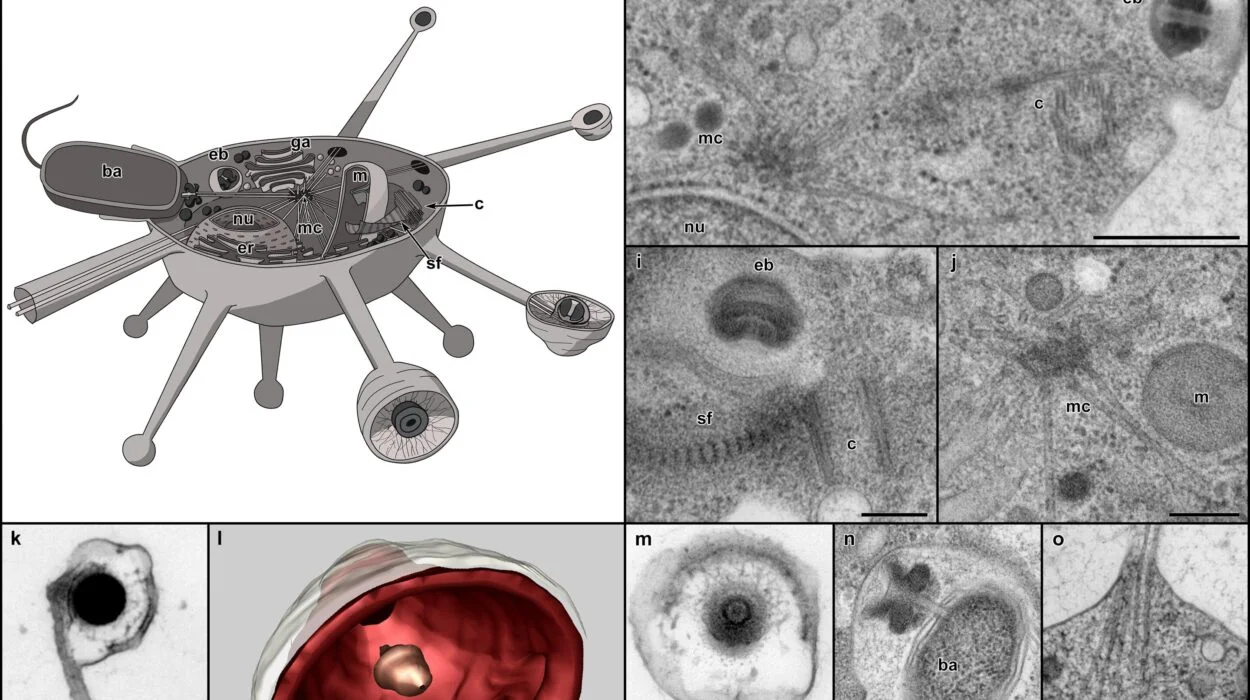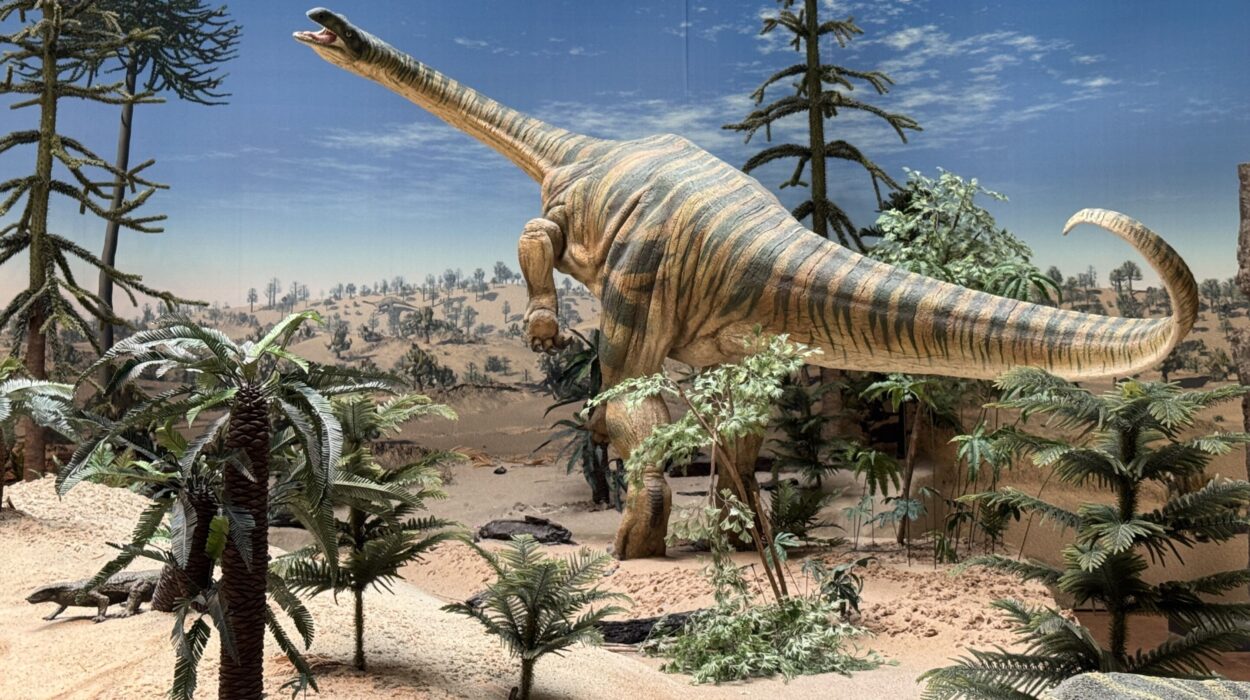When you picture dinosaurs—towering Tyrannosaurus rexes, horned Triceratopses, or duck-billed Hadrosaurs—odds are the dusty badlands of North America come to mind. And for good reason. Some of the most iconic dinosaur fossils ever discovered, from Montana to Alberta, from Utah to Wyoming, have come from this vast continent. Paleontologists from around the globe converge here every summer to sift through ancient sediment and bring long-dead giants back into the light.
But why? Why are so many dinosaur fossils found in North America, and not, say, evenly across the globe? The answer lies not only in geography and geology but also in time, climate, history, and even politics. It’s a mystery rooted in deep time, but it’s also a very human story—one of wonder, competition, and the relentless pull of curiosity.
The Perfect Recipe for Fossilization
To understand why so many dinosaur fossils are found in North America, we must begin with the question: what makes a fossil in the first place? Fossilization is a rare event. For every million animals that live and die, only a handful leave behind bones preserved in stone. The conditions must be just right. Rapid burial is key—usually under sediment, like mud or sand—before scavengers can destroy the body. Then, minerals slowly seep in, replacing organic material with stone over millions of years.
North America, particularly during the Mesozoic Era (about 252 to 66 million years ago), offered exactly the kind of conditions needed. For tens of millions of years, vast river systems, floodplains, deltas, and coastal regions dominated much of what is now the western United States and Canada. These were low-lying, wet, and teeming with life. When dinosaurs died in or near these water-rich environments, they had a far better chance of becoming fossils.
What we find today in places like Montana or Alberta are not just rocks—they are windows into lost worlds. The layers of sediment that buried the dinosaurs also buried the stories of the environments they lived in. They preserved footprints, coprolites (fossilized dung), nests, and entire fossilized forests. These are not barren lands, as they appear now, but ancient, thriving ecosystems turned to stone.
The Lost Inland Sea
One of the most important features of North American geology during the Late Cretaceous period was the Western Interior Seaway. This massive body of water split the continent in half, stretching from the Arctic Ocean to the Gulf of Mexico. To the west lay Laramidia, a long, narrow strip of land that included parts of what are now Utah, Colorado, Montana, and Alberta. To the east lay Appalachia.
Laramidia was a dinosaur paradise. Because it was hemmed in by mountains to the west and sea to the east, it created a series of distinct habitats. Different regions, sometimes separated by only a few hundred miles, were home to different species. It’s why you see such diversity of dinosaurs in the fossil record: ceratopsians like Triceratops and Styracosaurus, tyrannosaurs like Gorgosaurus and Daspletosaurus, hadrosaurs like Parasaurolophus and Corythosaurus.
The geological activity that formed the Rocky Mountains also played a role. As the land buckled and shifted, it lifted these sediment-rich deposits from below the surface, slowly exposing the ancient layers where dinosaur bones had been locked away. Erosion then did the rest—wind, rain, and frost wore away softer rock, revealing fossils embedded like time capsules.
The Fortuitous Geography of the Badlands
Much of the fossil wealth of North America is concentrated in areas known as “badlands”—arid regions with little vegetation, rugged terrain, and heavily eroded rock. What makes badlands so ideal for fossil hunters is that erosion continuously exposes new fossils while vegetation remains sparse, making them easy to spot.
Take the Hell Creek Formation in Montana, North and South Dakota, and Wyoming. It’s one of the most famous fossil beds in the world. Here, dinosaurs from the very end of the Cretaceous—just before the mass extinction—lie buried beneath your feet. It’s where the first nearly complete Tyrannosaurus rex was discovered. Or consider Alberta’s Dinosaur Provincial Park, a UNESCO World Heritage Site, where over 50 species of dinosaurs have been found.
These regions weren’t always badlands, of course. During the Mesozoic, they were verdant floodplains or lush deltas. But over millions of years, the right kind of erosion turned them into fossil goldmines. In a strange twist, what once teemed with life is now dry and desolate—yet precisely because of this desolation, we can now glimpse the vibrant life that once flourished there.
Timing Is Everything
Another crucial factor is the age of the rocks exposed at the surface. Different continents reveal different windows of geologic time. In much of North America, the rocks at or near the surface in western states are from the Mesozoic Era—the Age of Dinosaurs. That’s not true everywhere. In much of Europe or eastern North America, older or younger rocks dominate the surface.
For a fossil to be found, it’s not enough that it was formed—it also has to be exposed or close enough to the surface to be discovered. And in western North America, the balance is just right. Thanks to tectonic uplift, glaciation, and erosion, the Mesozoic rock layers are near the surface, especially in places like the Morrison Formation, the Hell Creek Formation, and the Judith River Formation. This gives scientists—and even amateur fossil hunters—an accessible record of millions of years of dinosaur life.
It’s not that dinosaurs didn’t live elsewhere. Fossils have been found on every continent, including Antarctica. But not every continent is so generous in revealing its secrets. Many ancient fossils are still buried deep beneath other layers or hidden under thick forests, cities, or oceans.
A Legacy of Exploration
There’s also the human story to consider. Paleontology in North America has a rich, almost mythic history. The 19th-century “Bone Wars” between rival paleontologists Edward Drinker Cope and Othniel Charles Marsh set off a fossil-hunting frenzy in the American West. Though often marked by questionable tactics, these expeditions uncovered dozens of new species and ignited public fascination with dinosaurs.
Museums across the continent—like the American Museum of Natural History in New York, the Field Museum in Chicago, and the Royal Tyrrell Museum in Alberta—grew their collections from these early discoveries. With institutional support, funding, and eager scientists, North America became a hub for paleontological research.
Moreover, many fossil-rich areas in the United States and Canada are public lands. This has made large-scale expeditions feasible and legal, unlike in other countries where fossils might be found on private land or in regions with strict export bans. Combine that with strong academic programs and public interest, and you have a recipe for ongoing exploration.
Continental Drift and Dinosaur Distribution
Dig deeper—literally and metaphorically—and plate tectonics tells an even grander story. During the time of the dinosaurs, the Earth’s continents were not where they are today. In the Jurassic period, most of the continents were joined in a massive supercontinent called Pangaea. As this supercontinent broke apart, different groups of dinosaurs evolved in isolation on the drifting landmasses.
North America’s connection to Asia, via a land bridge, meant that many species migrated between the two continents. This explains why some dinosaur fossils, like those of Troodontids and certain raptors, appear in both places. But as the Western Interior Seaway rose and divided North America, dinosaur species began to diversify even more—creating regional distinctions within a single continent.
This shifting of continents created not only new ecosystems but also set the stage for how fossils would eventually be found. Some regions sank under water, preserving marine fossils. Others uplifted, cracking open ancient sediments. The fossil record in North America is a palimpsest—layers of history built upon each other, waiting to be uncovered.
Fossil Rich, Not Fossil Exclusive
While North America is famously fossil-rich, it’s not the only hotspot. Mongolia’s Gobi Desert, Argentina’s Patagonia, and China’s Liaoning Province are equally significant. In fact, China has led the way in recent decades with its astonishingly preserved feathered dinosaurs, reshaping our understanding of bird evolution.
So why does North America seem to dominate the public imagination when it comes to dinosaurs? Part of it is access and visibility. Much of the early dinosaur research and media attention originated in the United States. Hollywood helped too—Jurassic Park, after all, is set in the context of North American paleontology. Museums here are world-class and frequently collaborate with international researchers.
But make no mistake—the dinosaur story is global. The fact that we can find fossils in Argentina, Madagascar, and even Antarctica reminds us that dinosaurs were a planetary phenomenon. They reigned not just over western North America but over a supercontinent that once joined the corners of the Earth.
The Ghosts Beneath Our Feet
Standing in the heart of Montana or Alberta, it’s easy to feel alone among the wind-carved buttes and the dry grass. But if you close your eyes and listen, it’s possible to imagine the ground trembling beneath the footsteps of a passing sauropod, the air splitting with the roar of a T. rex. This was once their home, and now their bones lie just beneath your feet.
Finding fossils is more than an academic pursuit—it’s a resurrection. It’s a way of reaching across the abyss of time and touching something that once lived, breathed, hunted, and loved in its own animal way. Each fossil is a message, a whisper from the past that says, “I was here.”
North America’s fossil abundance isn’t just a lucky accident of geology. It’s a reminder that Earth’s story is written in stone—but only visible to those willing to search. And North America, with its rich history, generous landscapes, and culture of curiosity, has become one of the great readers of that story.
An Ongoing Journey Into Deep Time
Today, the quest continues. Scientists are developing new tools to scan rocks without breaking them, using AI to catalog fossil sites, and even revisiting old discoveries with fresh eyes and modern techniques. Children still grow up dreaming of digging up dinosaurs, and some of them will become tomorrow’s paleontologists.
More than just bones, fossils are anchors to a shared past. They teach us about evolution, climate change, extinction, and resilience. They tell us that we are part of a long, unfolding story—a story in which North America plays a leading role, but not the only one.
And perhaps that is the most humbling lesson of all. The dinosaurs once ruled this land, just as we do now. They too must have felt eternal. But their bones lie in silent testimony to a truth we forget too easily: the Earth is not ours to keep. It is ours to wonder at, to learn from, and to explore.
And so we dig—through time, through stone, through mystery—ever seeking the shape of what was, and the hint of what might still be waiting beneath the next hill.
